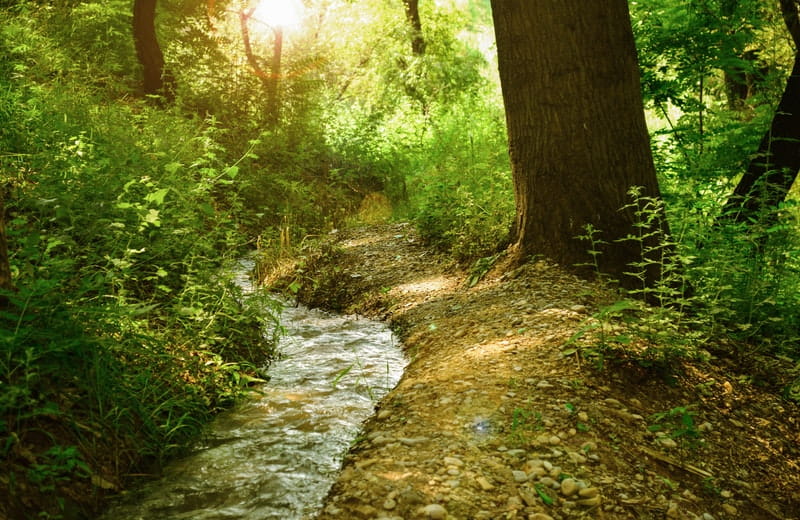When an oily resin called urushiol comes in contact with the skin, it causes an allergic reaction. This allergic reaction is called by poison ivy and is called a poison ivy rash. Urushiol oil is called by the oil in the stem, roots and leaves of a poison sumac, poison oak and poison ivy. It is sticky and easily attaches to your skin, any equipment you use, clothing and pet’s fur.
To avoid developing a poison ivy rash, it is important to wash your skin right away if you come in contact with oily resin. Washing urushiol from your skin immediately will not stop you from getting poison ivy, but can reduce your chances of developing the rash.

Developing a poison ivy rash may cause signs and symptoms for weeks. You may treat mild cases of poison ivy at home with cool baths and smoothing lotions. However, more severe poison ivy rash or a rash that is more widespread, especially on your genitals or face, may require prescription medication.
1. Redness
Sometimes your skin becomes red because you have exercised or participated in some kind of activity. This is different from the symptom of redness. Skin redness is an allergic reaction to something that has come in contact with your skin. Your skin becomes irritated and red. The allergic reaction may cause extra blood to rush to your skin’s surface in an attempt to fight the cause of the irritant. Also, your body attempts to heal your skin by using the extra blood. The cause of the skin becoming red and inflamed include poison ivy, contact dermatitis, eczema, atopic dermatitis and bites.
You may find the change in the color of your skin unsightly, but it is not a cause for concern. Often, it is a sign of a medical condition or disease. The redness of your skin does accompany other symptoms such as flushing, bumps, warmth of the skin and hives. The exact symptom depends on the type of medical condition you have. Another sign of this condition is the degree in redness. Your skin’s color may vary in the degree of red. The treatment for this symptom depends on the medical condition. For instance, washing the affected area with water and soap may assist in healing. You may also be prescribed medications like antihistamines to reduce the irritation.
2. Itching
Itchy skin occurs for a variety of reasons such as dry skin. Itching is the sensation on your skin that makes you want to scratch to relieve the itch. It is not a medical condition or disease. However, it is a symptom that you could have a medical condition or disease. Repeated itching may cause the area of your skin to thicken and raise. The skin may become irritated and infected too. Symptoms associated with itching includes scaly texture to skin, bumps, spots and red skin. Complications of itching skin could lead to scarring or infection. Treatment, which varies by the medical condition, includes corticosteroid creams and calcineurin inhibitors.
3. Swelling
When your skin, organs or other body part becomes enlarged because of buildup of fluid or inflammation, it is called swelling. Inflammation or buildup of fluid always happen internally. However, it is visible to the naked eye. Any time your skin swells, it is because of a medical condition or disease such as poison ivy, injury, medication or illness. The symptoms of any inflammation or fluid buildup in your skin depends on the underlying cause. For instance, your skin may itch or you may vomit. Other signs include fatigue, insomnia and dizziness. Treatment depends on the underlying cause of the swelling.
4. Blisters
A blister, or vesicle, is a raised area of the skin filled with fluid. The most common cause of a blister in the skin is friction between shoes or clothing and your skin. It is often annoying, uncomfortable and painful when you develop a blister on the skin. You may develop one or more than one in the same area of your skin.The exact cause of skin blisters depend on the underlying cause such as poison ivy or an infection. Depending on the cause of a blister, it may not need treatment. It may disappear on its own. However, a physician may give you medication to soothe any symptoms.
5. Difficulty breathing
Difficulty breathing occurs when you feel short of breath or it is hard to breath. You have trouble taking oxygen your body needs into your lungs. Difficulty breathing does occur when you are healthy. For instance, mild exertion, intense exercise or a stuffy nose may make it hard to breath in the air your body needs. Medical conditions and disease may also may it difficult to breath such as poison ivy, emphysema, asthma or pneumonia. Symptoms of difficulty breathing is feeling like you are not getting enough air to your lungs, wheezing and a faster breathing rate.
6. Pus
Pus is a thick fluid of dead skin cells,bacteria and white blood cells underneath your skin. The color of the pus varies from green, slightly yellow to white. The thick fluid develops under you skin as an attempt to fight an infection or allergic reaction. Signs of the condition include skin that is warm to the touch, area of the skin that swells and pain. Pus can develop for many reasons such as pimples on the skin to poison ivy rash. Treatment for the condition depends on the underlying cause of the pus.